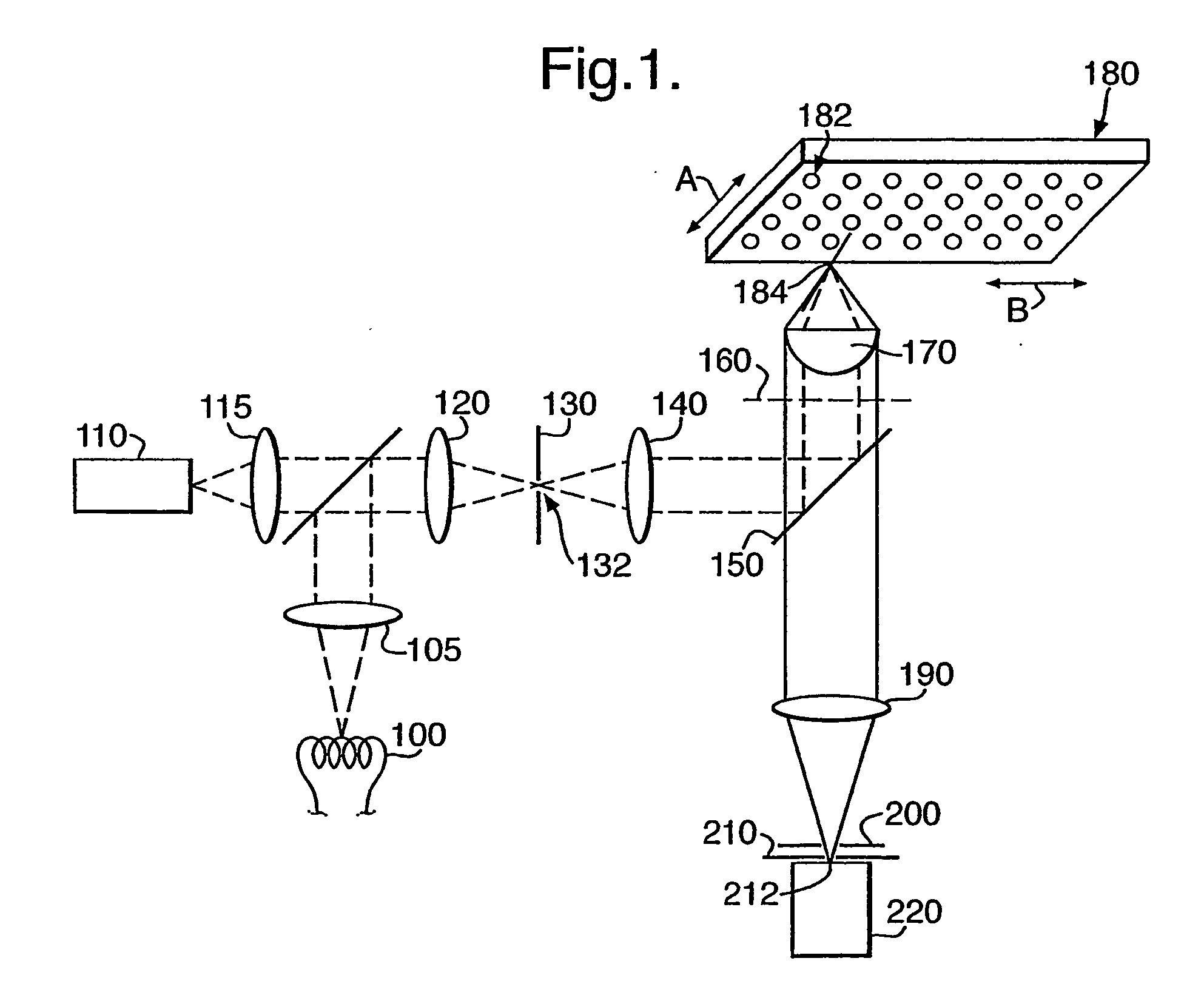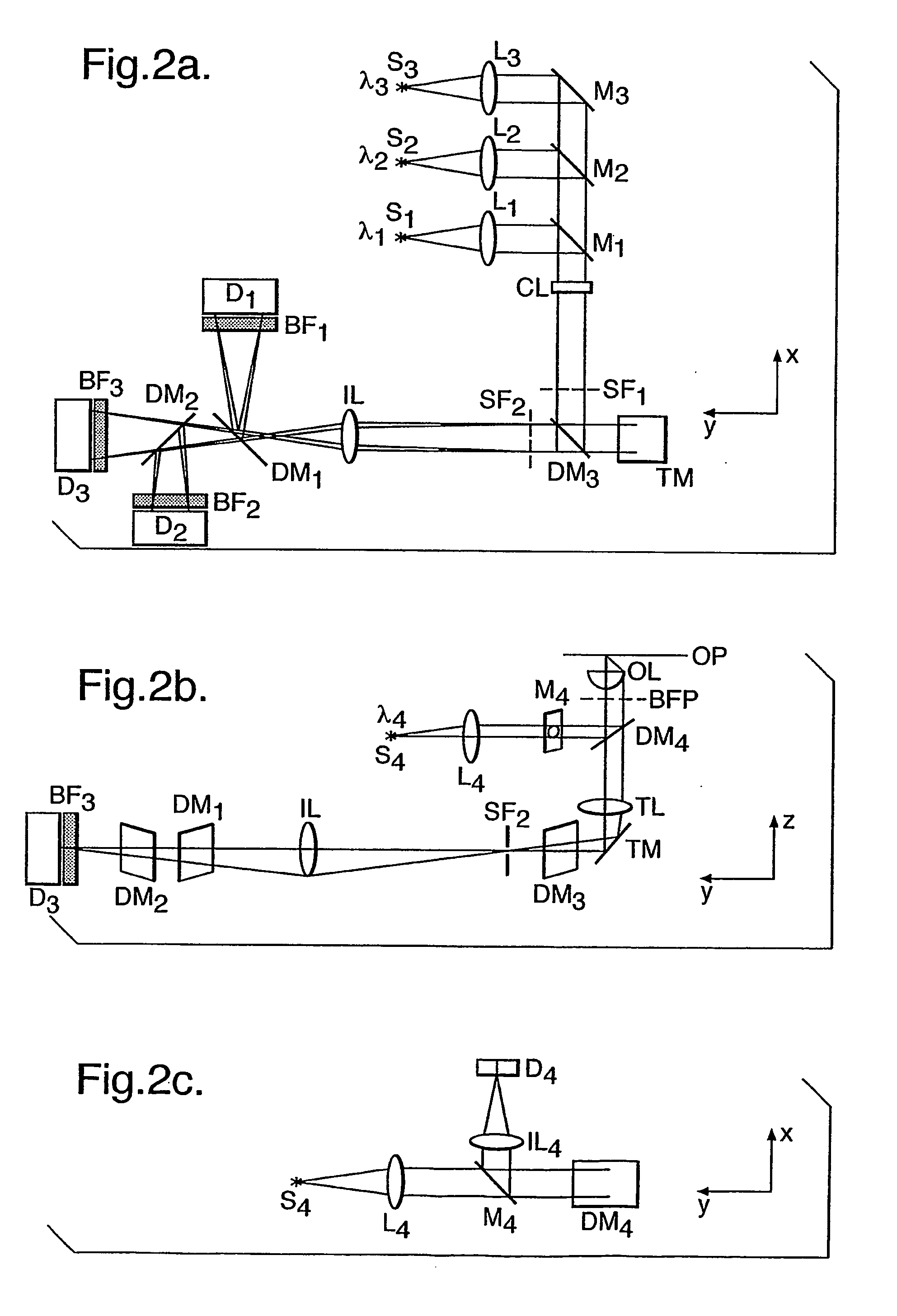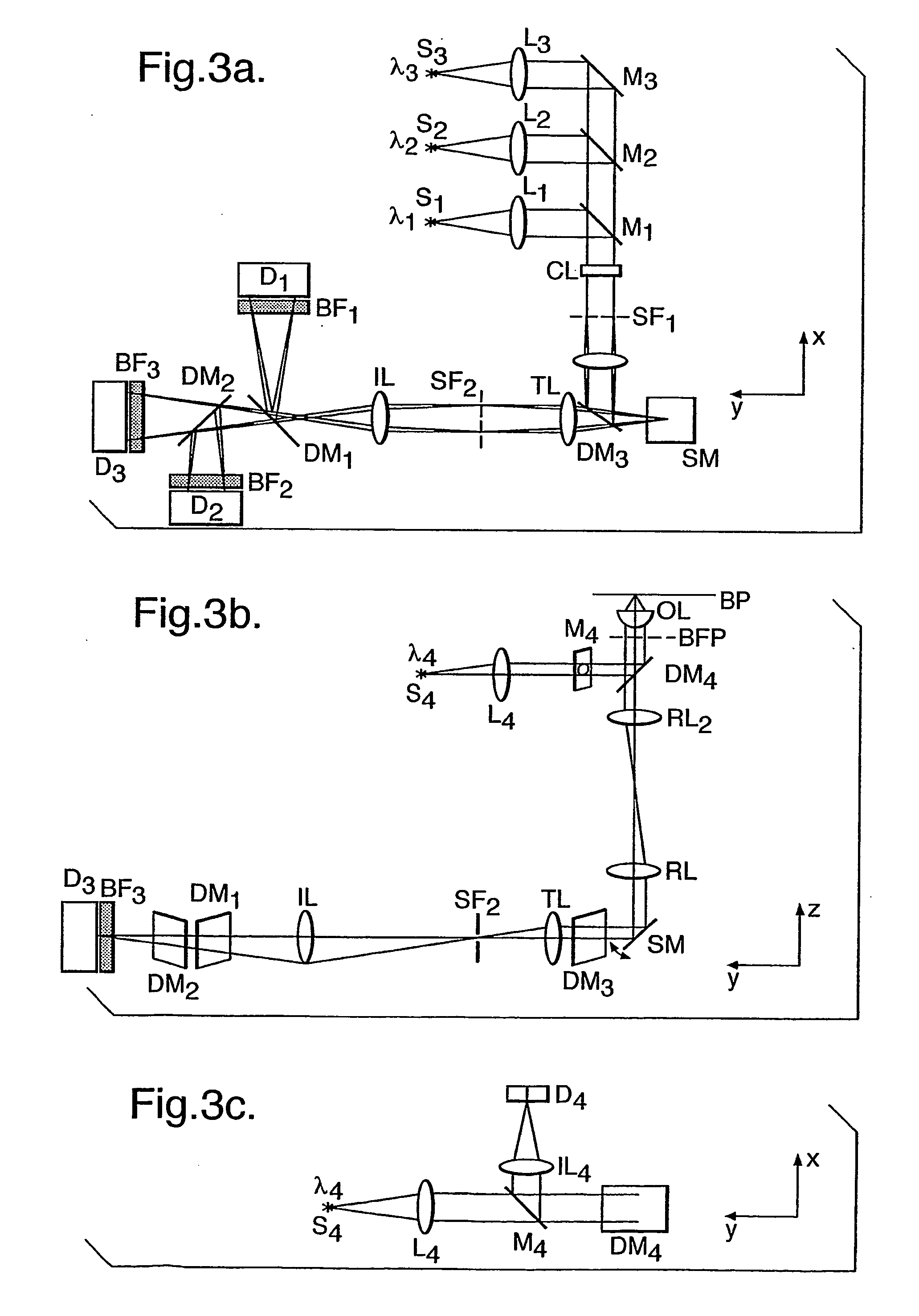Method for assessing biofilms
a biofilm and biochemical technology, applied in the field of biofilm characterization, can solve the problems of affecting the detection efficiency of biofilms, and widespread problems in the industry, and achieve the effects of sacrificing resolution, low noise, and high detection efficiency
- Summary
- Abstract
- Description
- Claims
- Application Information
AI Technical Summary
Benefits of technology
Problems solved by technology
Method used
Image
Examples
example 1
Visualisation of Bacterial Biofilm by Fluorescence Staining
[0171] A non-fluorescent strain of Escherichia coli (E. coli, JM109) was allowed to adhere to the wells of a Packard microtitre plate (cf Packard catalogue number 6005182) at 37° C. for 3 hours. Unattached bacteria were removed by washing and the attached cells allowed to grow overnight at 37° C. in standard Luria media (Amersham Biosciences). The bacteria were then visualised by the addition of the fluorescent DNA stain Hoechst 33342 (1 μM; Sigma). On visualisation in the imaging system, the bacteria showed a dense, but not uniform, pattern of staining indicative of growing in patches (see FIG. 15). A scan of the fluorescence intensity into the depth of the biofilm indicated that the film was several micrometers in depth.
example 2
3D Visualisation of Adhered Population of E. coli Constitutively Expressing GFP
[0172] A second experiment was conducted growing E. coli in a microtitre plate as in Example 1 above, except that the E. coli JM 109 constitutively expresses a GFP, having the GFP-F64L-S175G-E222G mutation. After removal of unattached cells by washing, the remaining cells were incubated for approximately 10 hours at 37° C. with no agitation. A well-developed biofilm, that was neither over-grown nor only one-cell thick, was scanned as it was considered representative of a typical sample. Scanning was conducted at 488 mn to visualise the GFP.
[0173] The images shown in FIGS. 16A-D cover an area of 0.75×0.75 mm. Depth information was obtained by moving the focal plane of the instrument into the biofilm in 1 μm steps. The three images shown in FIGS. 16A, 16C and 16D represent slices taken and the respective z-position within the biofilm. The image shown in FIG. 16B is a 3-D rendered image, combining 30 imag...
example 3
Differential 3D Analysis of Adhered E. coli Cultures
[0175]E. coli CL182 possesses a low copy number vector (pGEX-6P-1) that confers ampicillin resistance and expresses the GFP (F64L, S175G, E222G) from the IPTG responsive tac promoter. E. coli XL1-blue is a standard strain that possesses transposon 10, conferring tetracycline resistance. The strains were mixed and grown in the presence of selective antibiotics (tetracycline, ampicillin or chloramphenicol) and the effects were visualised using the IN Cell Analyzer.
[0176]E. coli cultures were grown in batch culture at 37° C. for 16 hours under selective pressure. Cells were pelleted by centrifugation, washed and resuspended in cold PBS. OD600 mn was normalised (to 1) for both cultures and solutions were diluted ten fold in cold PBS. Cells (100 μl) were allowed to settle and adhere to the surface of a Packard microtitre plate (Packard #6005182) at 4° C. for 1 hour. Adhered E. coli were washed twice with PBS (100 μl). Luria broth (10...
PUM
| Property | Measurement | Unit |
|---|---|---|
| wavelengths | aaaaa | aaaaa |
| depths | aaaaa | aaaaa |
| wavelength | aaaaa | aaaaa |
Abstract
Description
Claims
Application Information
 Login to View More
Login to View More - R&D
- Intellectual Property
- Life Sciences
- Materials
- Tech Scout
- Unparalleled Data Quality
- Higher Quality Content
- 60% Fewer Hallucinations
Browse by: Latest US Patents, China's latest patents, Technical Efficacy Thesaurus, Application Domain, Technology Topic, Popular Technical Reports.
© 2025 PatSnap. All rights reserved.Legal|Privacy policy|Modern Slavery Act Transparency Statement|Sitemap|About US| Contact US: help@patsnap.com



